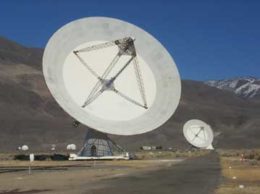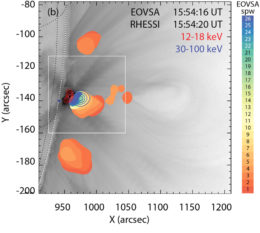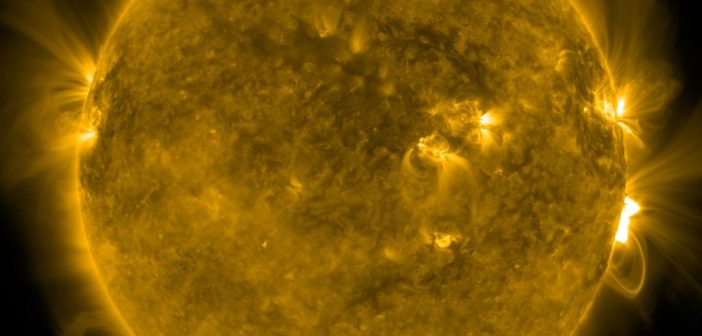The Sun is a rather well-studied star, so it’s always exciting when we get the opportunity to observe it in a new way. One such opportunity is upcoming, via the Parker Solar Probe that just launched last week. But while we wait for that new view of the Sun, we have another one to examine: the Sun in microwaves.
Peering into Flares

The spectrum over time for the first ~1 hr of the solar flare SL2017-09-10, shown at different wavelengths. [Gary et al. 2018]
But before now, the vast majority of microwave studies of solar flares have relied on data from the Nobeyama Radioheliograph in Japan, which observes the Sun at just two fixed frequencies that lie well above the peak of the microwave spectrum. This spectral regime explores only regions of high magnetic field strength.
What could we learn about solar flares from the lower-frequency microwaves emitted from more weakly magnetized regions? A newly upgraded array, the Expanded Owens Valley Solar Array (EOVSA) in California, is now helping us to answer this question.

One of the antennas in the Owens Valley Solar Array. [Dale E. Gary]
An Upgraded Array
After its recent upgrade, which concluded in April 2017, EOVSA now consists of 15 antennas — which produce imaging and spectroscopy data that span the microwave spectrum, including lower microwave frequencies. In a recent study led by Dale Gary (New Jersey Institute of Technology), a team of scientists has presented the first example of microwave imaging spectroscopy from EOVSA, demonstrating the powerful new observations capable with this technology.
As a target to test the array’s capabilities, Gary and collaborators selected a solar flare that occurred on the limb of the Sun — i.e., the edge of its disk, as seen from Earth — in September of 2017: SOL2017-09-10.
High-Energy Electrons Everywhere!

EOVSA microwave data plotted in color over a 5’ x 5’ AIA image of the Sun during SOL2017-09-10. RHESSI hard X-ray data is shown in contours. The EOVSA data reveals the presence of high-energy electrons in multiple locations: in small reconnecting loops, well above these bright loops, and, at the north and sourth, associated with the legs of a much larger loop. [Gary et al. 2018]
This discovery indicates the necessity of some amendments to our standard model for the physics of solar flares. Though these early results from EOVSA may be preliminary, they clearly demonstrate the powerful capabilities of this new technology. We can look forward to more new observations of the Sun in the future, continuing to advance our understanding of how energy is released from our nearest star.
Citation
“Microwave and Hard X-Ray Observations of the 2017 September 10 Solar Limb Flare,” Dale E. Gary et al 2018 ApJ 863 83. doi:10.3847/1538-4357/aad0ef
